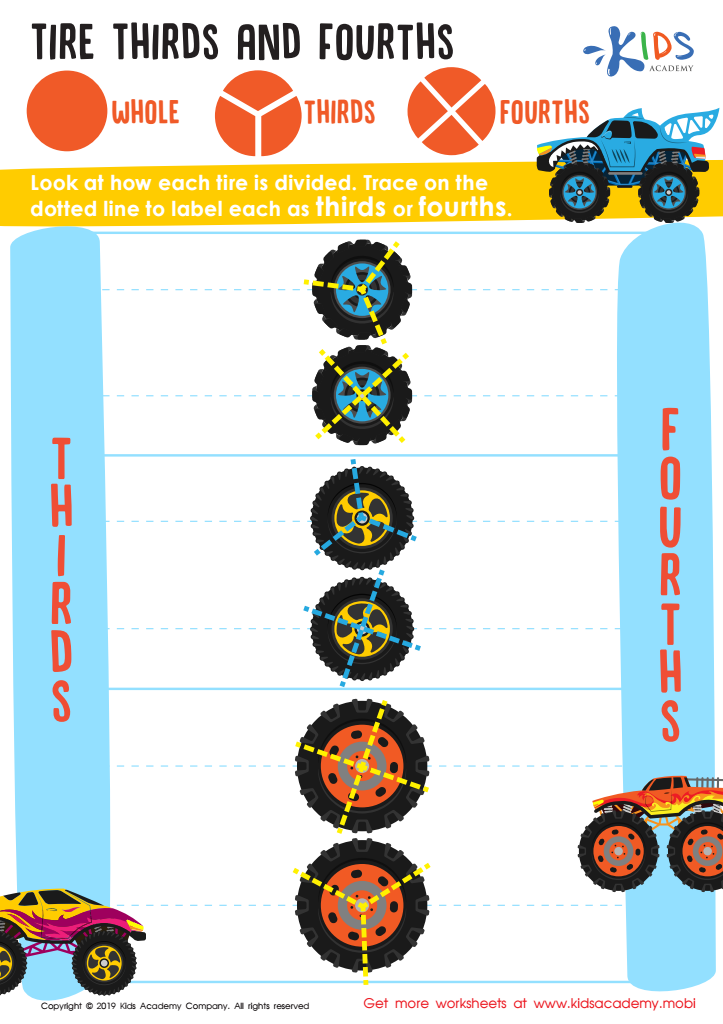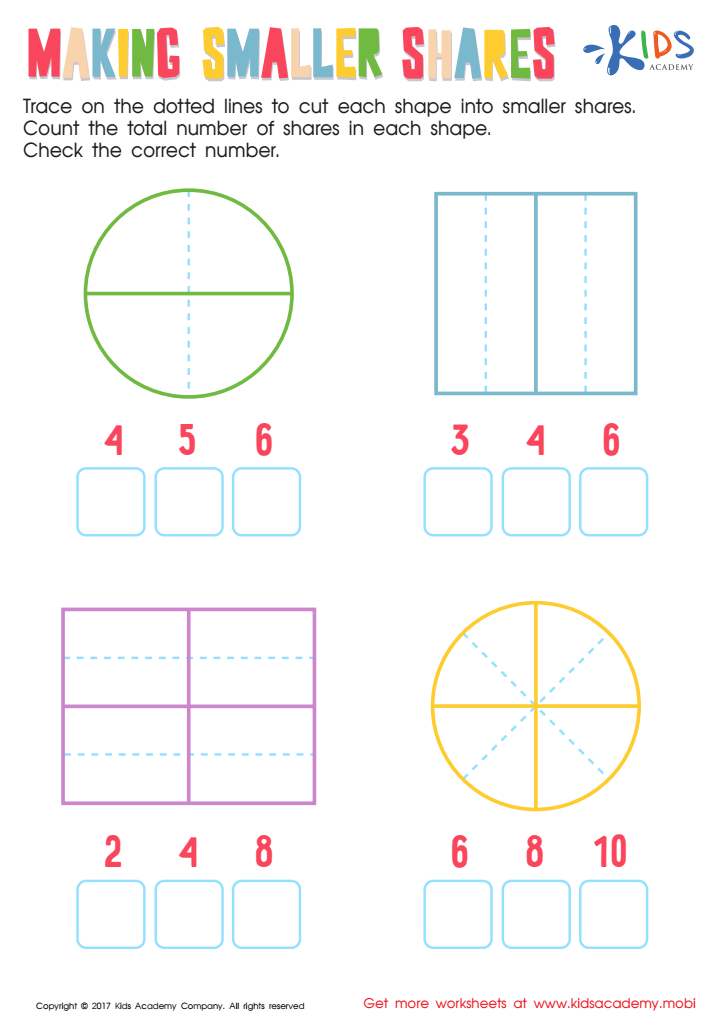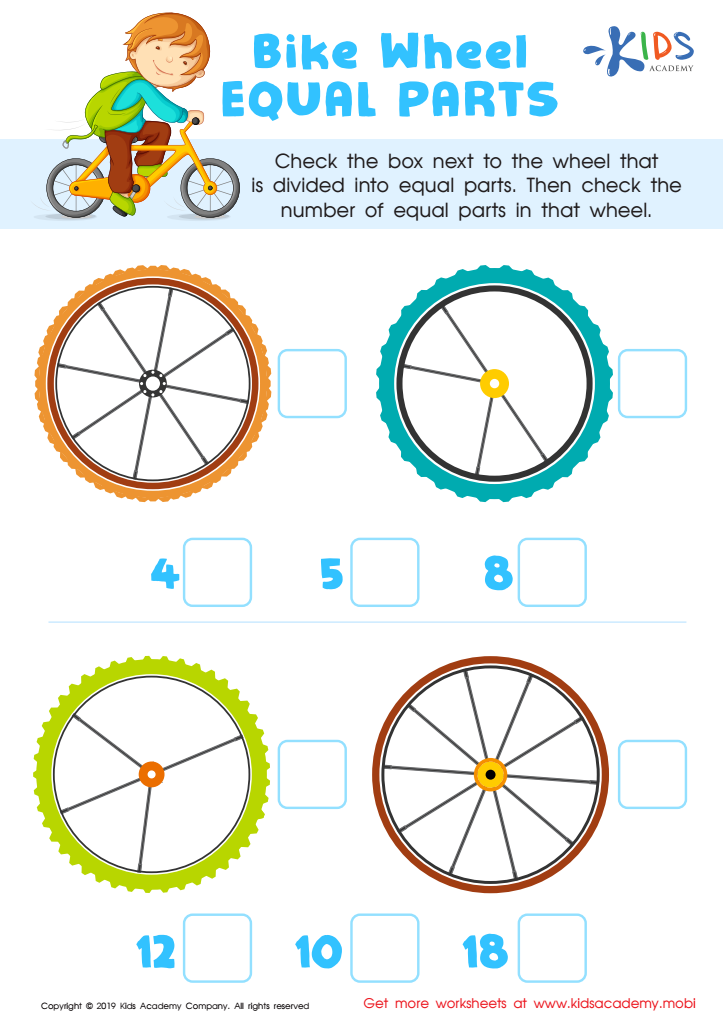Comparing Fractions Geometry Worksheets for Ages 7-8
5 filtered results
-
From - To
Introduce your 7-8-year-olds to the world of fractions with our "Comparing Fractions Geometry Worksheets." These engaging and educational printables are designed to make learning fractions fun and interactive. Kids will explore shapes, colors, and patterns while mastering key concepts like numerator and denominator comparisons. Our worksheets provide step-by-step guidance and practice problems that align with school curricula, ensuring your child receives comprehensive support. Perfect for classroom use or homeschooling, these tools help students build critical math skills and confidence. Dive into fraction adventures today and watch your child's understanding soar! Explore more at Kids Academy.


Tire Thirds and Fourths Worksheet


Fractions: Shapes Worksheet


Comparing Shares Worksheet


Making Smaller Shares Worksheet


Bike Wheel Equal Parts Worksheet
The early introduction of comparing fractions and basic geometry to children aged 7-8 is pivotal for building a strong mathematical foundation. At this developmental stage, children's cognitive abilities are evolving fast, making it the perfect time to foster critical thinking and problem-solving skills. Comparing fractions isn't just about numbers; it lays the groundwork for understanding proportional relationships, measuring quantities, and tackling more complex math concepts in the future. For instance, grasping that 1/2 is larger than 1/3 cultivates an early understanding of numerators, denominators, and part-whole relationships, enhancing numeracy skills.
Geometry plays an equally crucial role. Learning basic shapes, their properties, and spatial relationships boosts children's visual-spatial reasoning, critical for tasks ranging from STEM subjects to everyday activities like reading maps. Engaging with geometry can help children recognize patterns and improve their logical thinking abilities, setting them up for success in more advanced mathematical problem-solving.
Moreover, making these concepts accessible and engaging can also foster a positive attitude toward math, reducing anxiety and building confidence. Overall, parents and teachers should care about these early math skills because they form essential building blocks for academic success and everyday problem-solving, contributing to a child’s holistic cognitive development.
 Assign to My Students
Assign to My Students






























